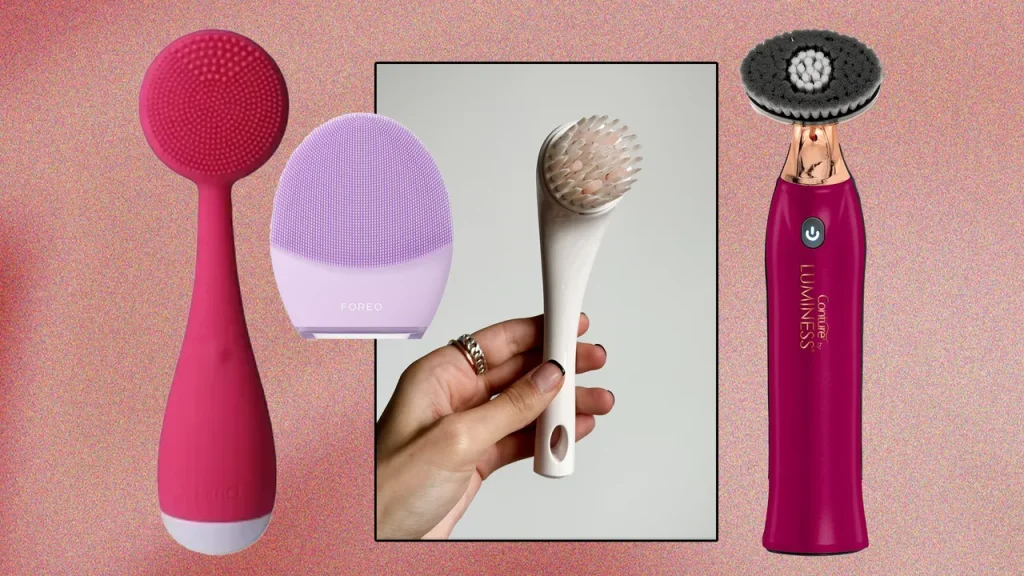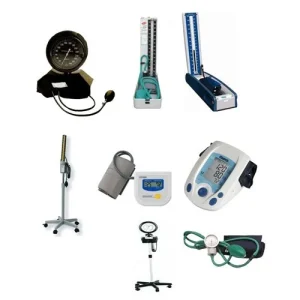Facial Cleansing Brush: What Is It? How It Works, Its Applications, and Safe Usage Tips

A facial cleansing brush is a modern skincare tool that has gained popularity for its ability to deeply cleanse the skin, remove impurities, and promote a healthy complexion. These devices offer more than just basic cleaning; they provide a more effective, gentle, and time-efficient way to maintain healthy skin. In this article, we will explain what a facial cleansing brush is, how it works, its practical applications, and how to use it safely for the best results.
1. What Is a Facial Cleansing Brush?
A facial cleansing brush is an electric or manual device designed to help cleanse the skin more effectively than traditional hand washing. The brush typically features soft bristles or silicone tips that help to remove dirt, makeup, excess oils, and dead skin cells from the skin’s surface. This results in cleaner, smoother skin and a more radiant complexion.
Popular Types of Facial Cleansing Brushes
- Electric Facial Brushes: These brushes are powered by a battery or USB charge, and they vibrate or rotate to gently exfoliate the skin. Electric brushes often offer multiple speed settings and modes for different skin types.
- Manual Facial Brushes: These brushes require no batteries and are operated by hand. They are typically smaller, more affordable, and come in various designs, including soft bristles or silicone heads.
- Silicone Facial Brushes: Made from soft, non-porous silicone, these brushes are more hygienic and gentle on the skin, offering an alternative to traditional bristle brushes.
Benefits of Using a Facial Cleansing Brush
- Deep Cleansing: A facial cleansing brush removes dirt, oil, makeup, and impurities more thoroughly than manual washing.
- Exfoliation: Many facial brushes gently exfoliate the skin, helping to remove dead skin cells and promote smoother skin.
- Improved Skin Texture: Regular use of a cleansing brush can help reduce pores’ appearance and improve overall skin texture by stimulating blood flow.
- Enhanced Product Absorption: A clean and exfoliated face allows skincare products like moisturizers and serums to penetrate the skin more effectively.
2. How Does a Facial Cleansing Brush Work?
Facial cleansing brushes work by using gentle mechanical movements to cleanse and exfoliate the skin. The way they function depends on the type of brush and its components. Here’s an overview of how these devices operate:
The Key Components of a Facial Cleansing Brush
- Brush Head: The brush head is the part that makes contact with the skin. It can be made of bristles, silicone, or other materials designed to be gentle on the skin while providing effective cleaning.
- Motor or Manual Mechanism: In electric models, the motor generates movements that make the brush head vibrate or rotate, ensuring that the skin is thoroughly cleansed. Manual models require users to move the brush in circular motions themselves.
- Speed and Power Settings: Many electric brushes offer different speed settings to cater to various skin types, such as sensitive or oily skin. Higher speeds are typically used for deep cleansing, while lower speeds are gentler.
The Principle of Operation
- Vibrations and Rotations: Electric cleansing brushes use vibrations or oscillations to agitate the skin, helping to break down dirt and oil. Some brushes rotate in a circular motion to provide a deeper cleanse, while others vibrate at high frequencies to loosen and remove impurities.
- Gentle Exfoliation: The bristles or silicone tips exfoliate the skin as they glide over the surface, helping to slough off dead skin cells and encourage cell renewal.
3. What Are the Applications of Facial Cleansing Brushes?
Facial cleansing brushes can be used in various scenarios, and their benefits extend beyond just cleaning the skin. Here are some practical applications:
Daily Cleansing Routine
Facial cleansing brushes are primarily used as part of a daily skincare routine to cleanse the skin more effectively than manual washing. They help to remove dirt, oil, and makeup residues, ensuring the skin is thoroughly clean.
Exfoliation for Smoother Skin
Using a cleansing brush regularly can gently exfoliate the skin, removing dead skin cells and promoting smoother, more youthful skin. This is especially helpful for people with dull skin or those who suffer from clogged pores.
Pore Minimization
By deeply cleaning the pores and removing excess oils, facial cleansing brushes can help minimize the appearance of large pores over time.
Prepping Skin for Other Skincare Products
A properly cleansed face allows moisturizers, serums, and other skincare products to be absorbed more effectively, improving their performance. Using a facial cleansing brush helps prime the skin to get the most out of these products.
Treating Specific Skin Concerns
Some brushes come with interchangeable heads or settings designed for specific skin concerns, such as acne, blackheads, or sensitive skin. Certain models are made to address conditions like oily skin or dry patches, offering targeted treatments.
4. How to Use a Facial Cleansing Brush Safely
While facial cleansing brushes offer excellent benefits, it’s important to use them correctly to avoid skin irritation or injury. Follow these tips for safe and effective use:
Preparing Your Skin
- Remove Makeup: Before using a facial cleansing brush, make sure you’ve removed any makeup. This ensures that the brush can effectively cleanse your skin and prevent any makeup buildup on the device.
- Moisturize and Hydrate: Consider applying a gentle cleanser or moisturizing cream to your face before using the brush to help the brush head glide smoothly over your skin and enhance the cleansing process.
Using the Device
- Choose the Right Setting: If using an electric brush, adjust the speed setting to match your skin type. For sensitive skin, start with the lowest setting to prevent irritation.
- Gentle Pressure: Let the brush do the work. Do not apply too much pressure, as this can lead to skin irritation. Gently move the brush in circular motions across your face, focusing on areas that need extra attention.
- Limit Use: For sensitive skin, limit the use of the facial cleansing brush to once a day or a few times a week. Overuse can lead to skin sensitivity or dryness.
Cleaning the Device
- Clean the Brush Head: After each use, clean the brush head thoroughly with warm water and mild soap to remove any buildup. This helps maintain hygiene and ensures the brush works effectively.
- Replace the Brush Head: Brush heads should be replaced every 3-6 months, depending on the type of brush and how often it’s used.
Additional Tips
- Avoid Using on Broken Skin: Do not use the facial cleansing brush on areas with cuts, active acne, or irritated skin, as it may cause further irritation or spread bacteria.
- Use with Caution for Sensitive Areas: Be gentle around sensitive areas like the eyes and lips, as the skin is thinner and more delicate.
Conclusion
A facial cleansing brush is an invaluable tool for anyone looking to improve their skincare routine. It provides a deeper, more thorough cleanse, promotes exfoliation, and enhances the absorption of skincare products. By understanding how it works, its applications, and following safety tips for proper use, you can effectively incorporate a facial cleansing brush into your daily regimen to achieve cleaner, smoother, and more radiant skin. Remember to always follow the manufacturer’s guidelines for usage and care to get the best results while keeping your skin healthy and happy.





